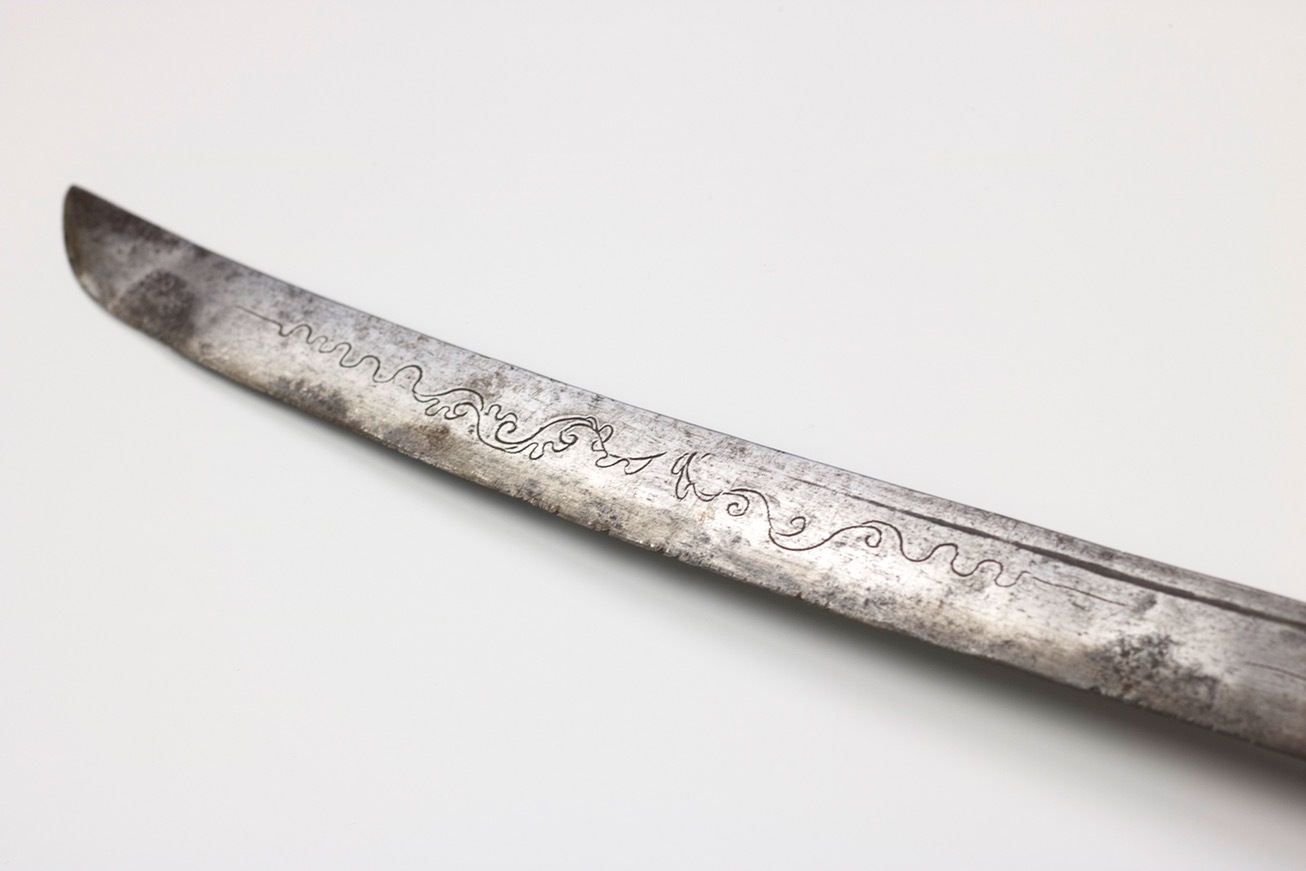Kiếm lưỡi mác - saber
Kiếm lưỡi mác - saber
Trong số những vũ khí phổ biến nhất của Việt Nam là saber hay gươm. Các phiên bản không sử dụng trong nghi lễ có nhiều hình dáng và kích cỡ khác nhau và lưỡi dao thường chịu nhiều ảnh hưởng từ kiếm Trung Quốc hoặc Nhật Bản: có các lưỡi uốn nhẹ không cong như kiếm dha, là loại vũ khí phổ biến ở các vùng khác của lục địa Đông Nam Á.
Kiếm Saber của Việt Nam thường có các mặt cắt ngang gồ ghề, khác với kiếm dha, giống như kiếm Nhật Bản và một vài loại kiếm của Trung Quốc. Những loại kiếm Việt nam khác thì mặt cắt lưỡi gươm có dạng hình nêm (wedged shape) hay tam giác, một gờ dầy 1 gờ mỏng, hoặc với một hệ thống khuôn tròn khá giống với kiếm liuyedao của Trung Quốc. Một đặc điểm đặc trưng Việt Nam là các lưỡi kiếm thường được chạm trổ hoa văn, ngay cả trên các phần ứng dụng. Ở chân lưỡi kiếm thường là các lá kim loại đặt giữa kiếm habaki Nhật Bản hoặc kiếm tunkou Trung Quốc.
Vỏ kiếm thường nhọn, khá giống với kiếm Trung Quốc đời nhà Minh. Phần đốc kiếm có hình tròn hoặc chữ nhật, thường dựa trên mẫu kiếm seppa Nhật Bản. Nhiều mẫu đốc kiếm có 2 lỗ mà thường tìm thấy trên các tay cầm Nhật Kogai Andkogatana. Những lỗ thủng được khoét trên phần chắn chuôi cầm tạo phong cách các thanh kiếm saber Việt Nam, ngay cả trên các phần trang trí nhưng không xuất hiện trên phần lưỡi dao Việt Nam.



Nguồn https://mandarinmansion.com/article/antique-vietnamese-arms
Sabers
Among the most common of Vietnamese edged weapons is the saber or guőm. The non-ceremonial version comes in various shapes and sizes and their blades often show considerable Chinese or Japanese influence: They feature narrow blades of gently curvature that do not widen like dha the common saber in the rest of mainland Southeast Asia. Vietnamese sabers often come with ridged cross-sections, also like Japanese and some Chinese swords. Others are wedged shaped in cross-section, or with a system of fullers, both reminiscent of Chinese liuyedao. A purely Vietnamese element is that they often have floral engravings, even on the more utilitarian pieces. At the base of the blade is often a metal sleeve that stylistically sits in the middle between a Japanese habaki and Chinese tunkou.
Scabbards are often pointy, reminiscent of those of Ming China. Guards are round or rectangular, often inspired by Japanese examples and usually incorporate an oval washer, like the Japanese seppa. Many Vietnamese guards include even the two holes often found on Japanese guards that are meant to accommodate the handles of the kogai and kogatana, a hairpin and a knife typically carried in the scabbard of the Japanese sword. The holes are reproduced as a purely stylistic element on Vietnamese saber guards, because the Vietnamese never carry these implements.

A guard, probably of Vietnamese origin, on a rare dha from the border region of north Vietnam, Yunnan and Laos.
Sold through Mandarin Mansion.

A utilitarian guőm of the Nguyen dynasty, of classical shape and with simple iron mounts.
Sold through Mandarin Mansion in 2018.

The engravings so typical for Vietnamese swords. Not all have them, but they are very common.
This particular one also has a date, 1887, engraved in the blade.
